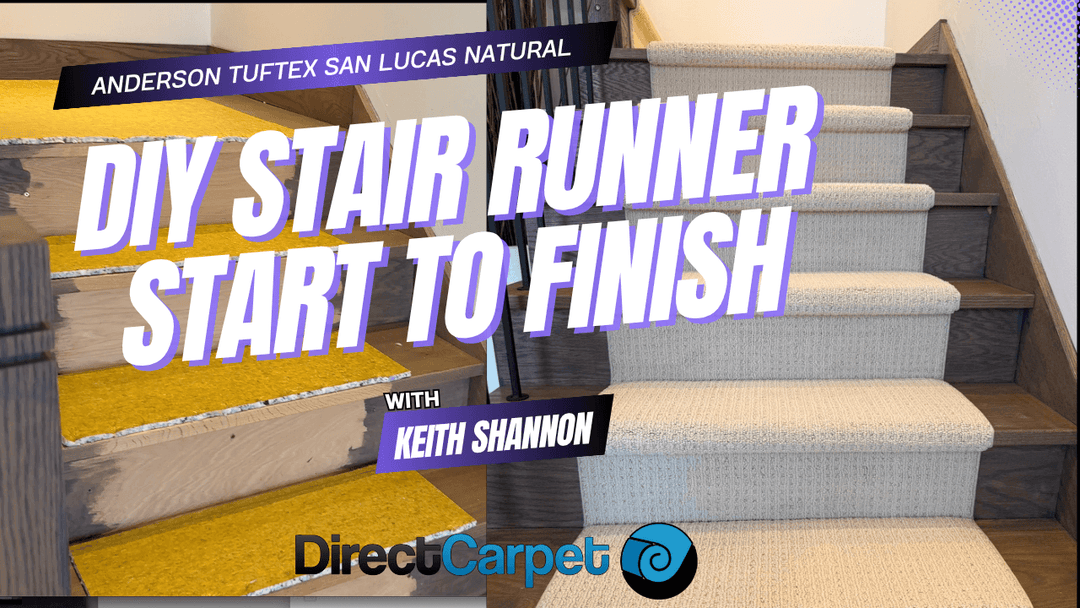How to Replace Carpet with An Inexpensive Stair Runner
A Stair Runner for your Home may just be the Answer you're looking for!

Stair runners are a really attractive way to add interest to your hallway or staircase, and they come in all sorts of styles and patterns.
Whether you want a traditional Stair Runner or something more contemporary, our range has something to fit the bill.
Fitting them doesn't have to be difficult, either. It’s quite possible that you could replace the carpet with an inexpensive stair runner from our range yourself.
If you’re new to DIY or lacking in confidence, you might prefer to choose a plain Stair Runner, as matching patterns can be tricky.
You’ll know in your heart whether a patterned Stair Runner is beyond your skills or whether you’re happy to choose a plain Stair Runner in place of something fancier. However, we think that with some help, you should be able to fit an inexpensive stair runner yourself.

Choose your Stair Runner
If you’re set on a patterned Stair Runner, understand that the smaller the pattern, the easier it is to fit That Particular Stair Runner, as any errors or imperfections are harder to spot. The bigger the pattern, the more any issues will be visible.
Traditionally, stair runners would be held in place by stair rods, but nowadays, the rods tend to be more decorative and it is up to you whether or not you want to use them on your Carpet Runner.
Whether or not you opt for a rod on each stair, you’ll want to make sure that the carpet runner is secure so that there is no risk of slipping, which could cause serious injury or worse.
We always advise using an underlay on all Stair Runners just as you would for carpet anywhere else in the home.
Measure Twice, Cut Your Stair Runner Once
Be clear exactly where you want the Carpet Runner to go, and this means measuring it exactly... And then measuring it again! Once you commit, there’s no going back, and if you don’t have it exactly right, everyone’s eye will be drawn to the error. Make sure the carpet Runner has an equal spacing on either side.
If you are willing to take on the project yourself, you might want to opt for a straightforward weave like Natural Artistry Smoke Screen DIY Carpet Runner.

If you feel a little more confident, why not try something with a very definite pattern, like Anderson Tuftex Only Natural Café Noir Carpet Runner?

Going around corners
Have a turn in your staircase? No problem. With a little planning - and a little wastage - it is still possible to match a pattern across an angle around a corner or turn in a staircase. Take your time, or if you’re not ready for something more complicated, consider instructing a professional to complete the job on your behalf.

If you have a straight run along a staircase, measuring should be relatively straightforward. Measure the same distance from either side so the Stair Runner sits exactly in the middle of your staircase. Depending on the age of your home, you may well need to measure and mark every step.
If you do have a turn, don’t panic. Look at the join and take steps accordingly.
90-degree turns
If you have a turn, these are the easiest to deal with. You need to give your Carpet Runner a 45 degree angle and join it to another 45 degree angle. It’s the most standard of joins, and for DIYers, it’s not difficult to pull off. Using a single width of the carpet, you can easily join two pieces of carpet Runner Together with a glue gun.
T Junction
The other common join, you might come across is a T joint. This is a straight cut to join a T section across a ‘regular’ run, where a vertical section will try and meet a horizontal neatly. We call it a "semi-mitered" fit, whereas a 90-degree turn might be termed a mitered cut.
What about non-standard turns?
Not every staircase is straight. We know that. It might be that your staircase is not straight by design or by time. In this case, you will need to measure each stair and drop individually. Some might say it adds to the charm! In this situation, a rod might be a good idea as it will effectively reset each stair, whether or not you choose to undertake the project yourself.
Make sure each section of carpet joins the riser at a right angle, and that it leaves at 90 degrees, too. Each riser should be the same. If you need to make an intersection, do that on the tread section.










Leave a comment